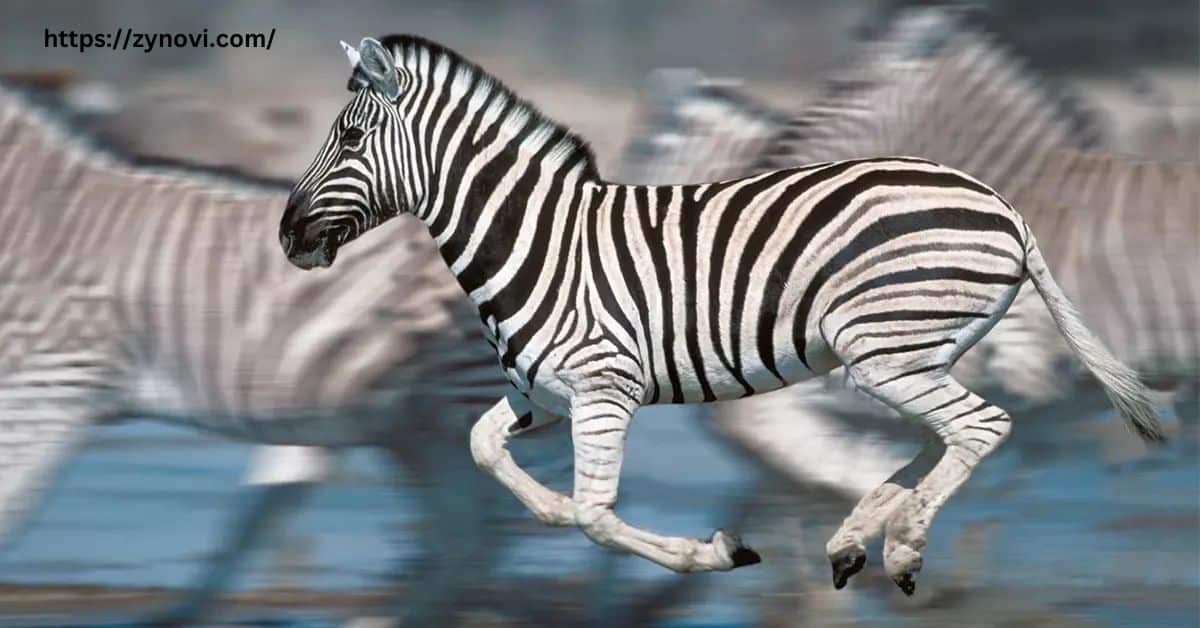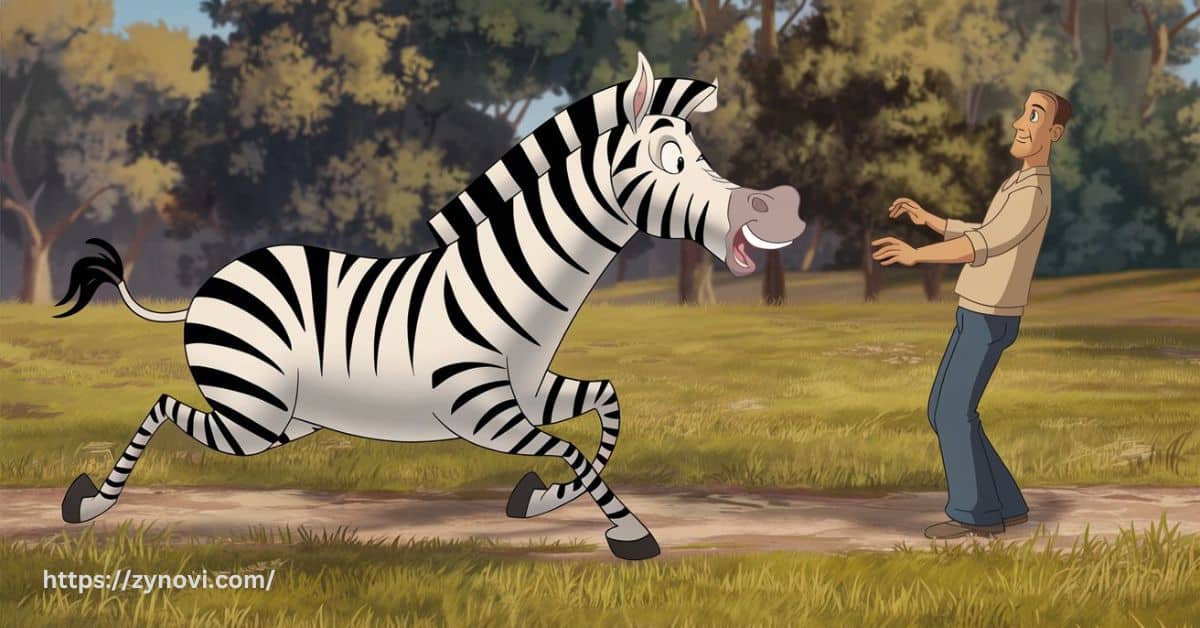Do Zebras Attack Humans? these are generally peaceful, zebras can lash out at humans if they perceive a threat or are under stress.
It’s a question that might surprise you, but zebras are wild animals, and their behavior can be unpredictable. You’ve probably seen them grazing peacefully on safari tours or in zoos, but did you know they can become aggressive when threatened?
In this article, we’ll dive deep into zebra behavior, exploring why they might attack and how to avoid dangerous situations. From their powerful kicks to their unpredictable reactions, you’ll be amazed at what these seemingly docile creatures are capable of. Keep reading to discover everything you need to know about staying safe around zebras!
What Are Zebras?
Zebras belong to the Equidae family, the same as horses and donkeys. There are three main species:
Overview of Zebra Species
- Plains Zebra (Equus quagga): Found across the African savannah, these zebras are known for their wide stripes and adaptability to grasslands.
- Mountain Zebra (Equus zebra): Native to mountainous regions in southern Africa, their narrower stripes distinguish them.
- Grevy’s Zebra (Equus grevyi): Inhabiting semi-arid grasslands in Kenya and Ethiopia, these zebras have unique narrow stripes and are the largest of the three species.
Unique Characteristics of Zebras
Zebras are best known for their distinctive stripes, which serve multiple purposes:
| Purpose | Description |
|---|---|
| Motion Dazzle | The stripes confuse predators by disrupting their ability to gauge the zebra’s speed and direction. |
| Camouflage | In tall grasses, the stripes blend with light and shadow, reducing the zebra’s visibility. |
| Social Identification | Each zebra’s stripe pattern is unique, enabling individual recognition within herds. |
Zebra Behavior: Wild Instincts and Interactions
Natural Habitat and Lifestyle
Zebras thrive in grasslands, savannahs, and mountainous regions, forming social herds that protect them from predators. Herds exhibit a hierarchical structure, often led by a dominant stallion.
Their daily routine includes grazing, drinking, and staying alert to predator threats, such as lions, hyenas, and cheetahs.
Defensive Nature of Zebras
Zebras rely on fight or flight instincts when threatened. Their defense mechanisms include:
- Backward and Sideways Kicks: With a kick force exceeding 3,000 psi, a zebra can break bones or cause fatal injuries to predators or humans.
- Powerful Bite: Their strong jaws deliver deep lacerations to defend against attackers.
- Protective Circle Formation: Zebras form a circle with foals in the center to shield them from predators.
Do Zebras Attack Humans?

Understanding Zebra Temperament
Zebras may appear calm and gentle due to their herbivorous nature, but they can exhibit significant aggression when faced with threats. Unlike domesticated horses, zebras retain a wild animal temperament, which makes them far less predictable and much more reactive in stressful situations.
Their strong fight-or-flight instincts, combined with a need to protect themselves from predators, result in behaviors like biting, kicking, or charging when they feel cornered or frightened. This unpredictable nature underscores the importance of maintaining caution during any human-zebra interaction.
Documented Zebra Attacks on Humans
There have been numerous cases of zebra attacks on humans, particularly in captivity or during safari experiences:
- Attacks in Zoos: Zoo handlers often face severe injuries, including deep bites and powerful kicks, as zebras can become highly stressed and defensive in confined environments.
- Safari Incidents: During safari tours, zebras may charge at tourists who unknowingly invade their territory or make sudden, unpredictable movements, triggering their defensive instincts.
Are Zebras More Aggressive in Captivity?
Are zebras friendly to humans? Zebras often display heightened aggression in captivity due to the stress of being confined in unnatural environments. The lack of open space limits their ability to escape perceived threats, intensifying their defensive instincts.
Proximity to humans and other animals they wouldn’t naturally encounter in the wild can further disrupt their comfort, leading to unpredictable or aggressive behavior.
Additionally, captivity can alter their social dynamics, as zebras thrive in herds with established hierarchies, which may not form properly in confined spaces.
Are Zebra Attacks Dangerous?
Do Zebras Attack Humans? Zebra attacks can be dangerous, as their powerful kicks and bites can cause serious injuries. In some cases, these encounters may even lead to life-threatening wounds, especially if safety precautions are ignored.
The Strength Behind a Zebra’s Kick and Bite
Zebras possess remarkable physical defenses that help them survive in the wild:
- Kick Power: A zebra’s kick can deliver an astonishing force of up to 3,000 psi, strong enough to fend off large predators like lions and cause severe injuries, even to humans.
- Bite Strength: With sharp incisors and powerful jaw muscles, a zebra’s bite can tear through flesh, leaving deep and painful wounds, making it a formidable defensive tool in close encounters.
Injuries Sustained From Zebra Attacks
Zebra attacks can result in various serious injuries:
- Fractures and Bruises from Kicks: The immense force of a zebra’s kick, often targeting the torso or limbs, can lead to broken bones and severe bruising.
- Lacerations from Bites: Zebras use their sharp teeth and strong jaws to deliver deep cuts, which, if untreated, may become infected and cause further complications.
- Rare Fatal Injuries: Though uncommon, fatal outcomes have been documented, especially when individuals failed to respect safety guidelines or ventured too close to stressed zebras.
Why Do Zebras Attack Humans?

Key Triggers for Aggression
Zebras can display aggression due to various triggers, including:
- Human Encroachment: When humans invade their territory, zebras may perceive it as a direct threat, leading to defensive or aggressive responses.
- Stress in Captivity: The confined spaces and frequent human interaction in captivity disrupt their natural behaviors, heightening their stress levels and making them more prone to aggression.
- Protective Maternal Instincts: Female zebras fiercely protect their foals, often attacking perceived threats with kicks, bites, or charging behavior.
Differences Between Human and Predator Perception
Zebras often perceive unfamiliar entities, including humans, in a similar way to how they view natural predators. Their survival instincts prompt them to be cautious and alert when encountering anything that might pose a threat.
Sudden movements, loud noises, or unfamiliar scents can trigger a zebra’s fight-or-flight response, causing them to become defensive.
This heightened sensitivity to perceived danger makes zebras unpredictable and potentially aggressive, even in situations where humans may not see themselves as a threat.
Their instinctual reaction is to protect themselves from any perceived risk.
How to Avoid Zebra Attacks

Are zebras dangerous? If something happens then how we can safe from Zebra attacks, here are some important points about that:
Precautions During Wild Encounters
When encountering zebras in the wild, it’s essential to prioritize safety by following these guidelines:
- Maintain a Safe Distance: Keep at least 50 meters away from zebras to avoid intruding on their personal space and to reduce the risk of triggering defensive behavior.
- Avoid Sudden Movements: Quick or erratic movements can startle zebras, prompting them to react aggressively. Move calmly and slowly to avoid escalating the situation.
- Observe Zebra Body Language: Pay attention to signs of agitation, such as stomping their hooves or pinning their ears back. These are clear indicators that the zebra may feel threatened and could become aggressive.
Safety Measures in Captive Environments
In captive environments like zoos or wildlife reserves, it’s crucial to follow safety measures to ensure both human and zebra safety:
- Respect Barriers and Follow Staff Instructions: Always stay behind designated barriers and obey any instructions from zoo staff to avoid disturbing the animals and causing stress. Staff are trained to manage animal behavior and ensure visitor safety.
- Avoid Feeding or Touching Zebras Without Supervision: Never attempt to feed or touch a zebra unless explicitly instructed by a trained professional. Unauthorized interaction can lead to stress, aggressive behavior, or injury from kicks or bites.
Myths vs. Facts About Zebra Aggression
| Myth | Fact |
|---|---|
| Zebras are just striped horses. | Zebras have a wilder temperament and stronger defense mechanisms. |
| Zebras are harmless to humans. | Zebras can cause severe injuries when provoked or stressed. |
| Zebras only kick when threatened. | Zebras may also kick during social disputes or out of irritation. |
FAQs
Are zebras human friendly?
Zebras are not naturally human-friendly and may become aggressive when threatened or stressed.
What to do if you encounter a zebra?
Maintain a safe distance, avoid sudden movements, and observe their body language. Do not approach or invade their space.
Are zebras gentle?
Zebras can be gentle under calm conditions but are generally more unpredictable than domesticated animals, especially when feeling threatened.
What is a zebra’s worst enemy?
Zebras’ main predators include lions, hyenas, and cheetahs. Their defensive behaviors and strong kicks help protect them from these threats.
Conclusion: Do Zebras Attack Humans?
While zebras are not inherently aggressive, their wild animal instincts and defense mechanisms make them potentially dangerous when provoked. By understanding zebra behavior and respecting their space, humans can coexist safely with these magnificent creatures.
Zebras remind us of the beauty and unpredictability of nature. Whether you’re on a safari tour or visiting a zoo, always approach with caution and admiration.
As the saying goes, “Respect the wild, and it will respect you back.”










